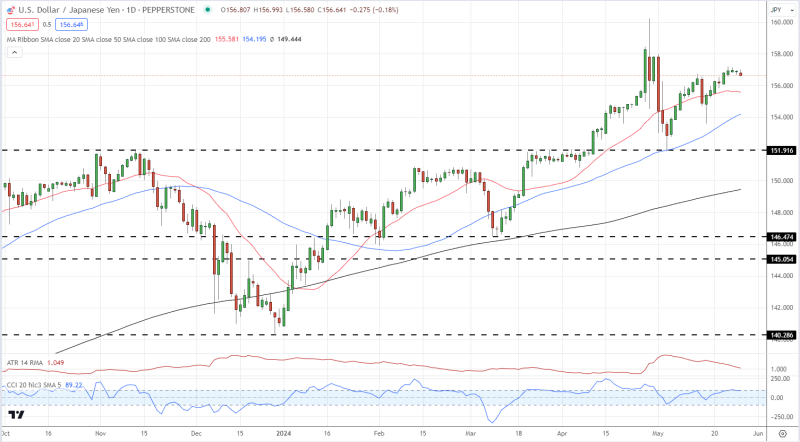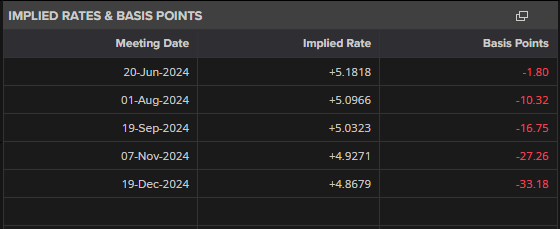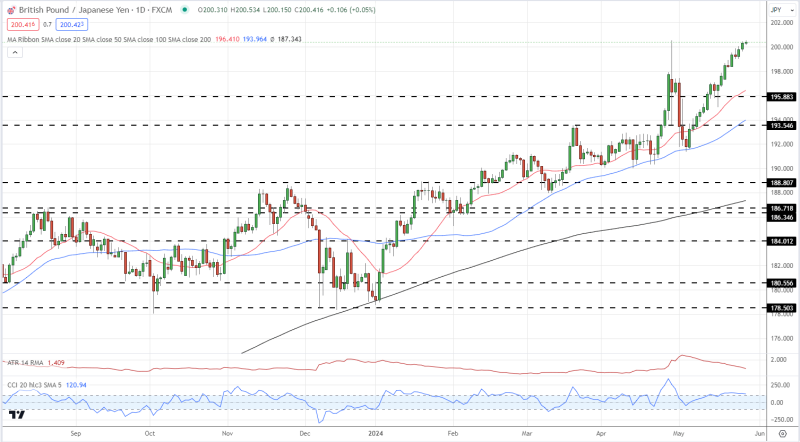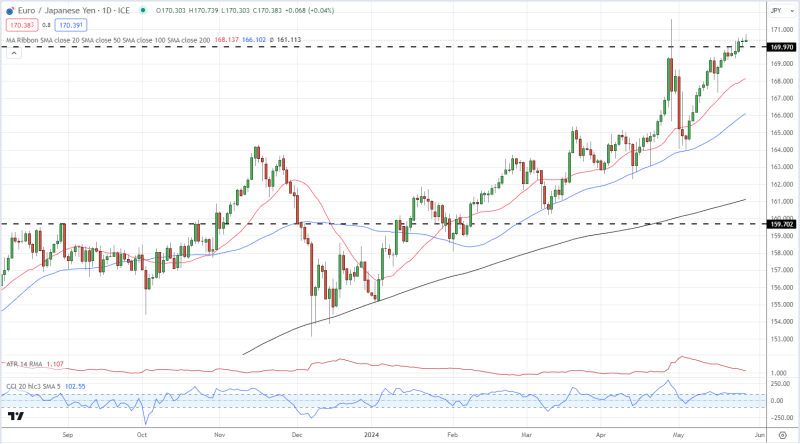Japanese Inflation Impact on Yen Weakness
A key measure of Japanese inflation rose more than expected in April, affecting the recent Japanese Yen weakness. The April services PPI increased by 2.8% YoY, surpassing expectations of 2.3% and the revised 2.4% in March. This is the sharpest rise since March 2015. The Bank of Japan will likely take note of this data as they look for sustained inflation to begin reversing their ultra-loose monetary policy.
While USD/JPY continues to print higher lows off the late-December low, the series of higher highs is currently broken and may remain so due to the threat of official intervention. For the pair to move lower, a break of both the 20-day and 50-day SMAs, at 155.58 and 154.20 respectively, is needed. Below this, support is seen just below 152.00. A move higher will encounter resistance at 158.00 and the April 29 multi-decade spike high at 160.21.

Retail trader data shows 26.27% of traders are net-long, with the ratio of traders short to long at 2.81 to 1. The number of traders net-long is 2.70% higher than yesterday and 3.73% lower from last week, while the number of traders net-short is 1.70% higher than yesterday and 5.02% higher from last week.
GBP/JPY continues to push higher due to Sterling strength. Recent UK economic data has delayed the timing of the first UK rate cut, with the first 25 basis point move now expected in November, although a move at the September meeting cannot be ruled out.

This hawkish delay has supported Sterling and pushed GBP/JPY back to the 200 level, nearing levels last seen in August 2008. A confirmed break higher could see GBP/JPY test 202 ahead of 205. However, Japanese officials will be cautious about allowing the Yen to weaken further.

The EUR/JPY chart looks similar to GBP/JPY, although the macroeconomic picture is different. The ECB is expected to cut interest rates by 25 basis points at next week’s central bank meeting, which may limit further upside in the pair.





